- News
- Reviews
- Bikes
- Components
- Bar tape & grips
- Bottom brackets
- Brake & gear cables
- Brake & STI levers
- Brake pads & spares
- Brakes
- Cassettes & freewheels
- Chains
- Chainsets & chainrings
- Derailleurs - front
- Derailleurs - rear
- Forks
- Gear levers & shifters
- Groupsets
- Handlebars & extensions
- Headsets
- Hubs
- Inner tubes
- Pedals
- Quick releases & skewers
- Saddles
- Seatposts
- Stems
- Wheels
- Tyres
- Tubeless valves
- Accessories
- Accessories - misc
- Computer mounts
- Bags
- Bar ends
- Bike bags & cases
- Bottle cages
- Bottles
- Cameras
- Car racks
- Child seats
- Computers
- Glasses
- GPS units
- Helmets
- Lights - front
- Lights - rear
- Lights - sets
- Locks
- Mirrors
- Mudguards
- Racks
- Pumps & CO2 inflators
- Puncture kits
- Reflectives
- Smart watches
- Stands and racks
- Trailers
- Clothing
- Health, fitness and nutrition
- Tools and workshop
- Miscellaneous
- Buyers Guides
- Features
- Forum
- Recommends
- Podcast
TECH NEWS
Giant unveils the “lightest, most efficient TCR ever” - but is it enough for it to remain the brand's flagship road race bike?
Giant has unveiled what it calls the “lightest, most efficient TCR ever”. Now in its 10th generation, the TCR is Giant's "complete race bike" and this latest model sheds 70g, gains a millimetre of tyre clearance and cleans up the front end in a bid to bring the 28-year-old classic up to date. Alongside the new bike, Giant's high-end componentry brand Cadex has released new wheels and tyres, and we've got all the details below...
Complete builds start from £2,699 with mechanical Shimano 105 and top out at £11,999 for the Dura-Ace equipped model with the new Cadex 40 Max wheelset, Race GC tyres and power meter.
Here are the headline claims:
- Lower frame weight (Advanced SL frame is around 75g lighter than previous generation)
- More integration (hoses and cables are now internally routed through the new bars and through a channel in the stem)
- More tyre clearance (now 33mm, up from 32mm)
- More aero (complete bike claims to save 4.19 watts at 40kph)
- More efficient (claimed 3.38% improvement in the stiffness-to-weight ratio)
- New wheels (Cadex Max 40 hookless wheelset weighs just 1,249g)
- New tyres (Cadex Race GC Tubeless tyre released alongside new bike)
- No new rim brake option for the first time in the TCR's history
Just to be double clear, these are all claims directly from Giant, not verified by us here at road.cc.
Over the past decade, we’ve seen plenty of brands consigning models to the history books as aero bikes get lighter and lightweight bikes get more aero. The TCR is surely a model name with too much value for Giant to just can it, but for the past few years, it’s been hard to see a place for the TCR when the Propel was just a few grams heavier.
Has Giant done enough with this latest model to ensure that the TCR name lives on not just in the pro peloton but in the wider world? Well, it’s certainly got the basics right: a hoseless front end was well overdue and the lowered weight now draws a larger wedge between itself and the Propel.
Only time will tell how many pros will choose to use this over its more aerodynamic brother, but Giant seems to have found all the ingredients to ensure that the TCR name continues for a good while yet.
The flagship model of the new range, the TCR Advanced SL, is said to be the lightest, most efficient TCR ever. That’s to be expected. When did a brand ever say any different? But the entire range also features innovative new features that are largely made possible by new construction techniques
Beyond the cockpit, the new TCR range features two seatpost systems, depending on the series. The new TCR Advanced SL is crafted with the signature integrated seatpost (ISP) as part of the frameset, an integrated design that saves 40g, improves aerodynamics, and is more compliant than the previous generation ISP. The TCR Advanced Pro and Advanced series use the Variant composite seatpost—a standard-style post that offers greater ease of adjustment and fit but also has a proprietary shape that’s integrated with the frameset for aerodynamics and compliance.
Lower weights
> How to make your bike lighter
For proof that times have changed, you needn’t look further than team Jayco Alula who have nearly always used the latest Propel over the outgoing TCR. This is likely because, compared to the old TCR frameset, the latest Propel is only 32 grams heavier despite being significantly more aero. This has meant that the TCR has more often than not been consigned to the roof of the team car. Clearly then, if the 2024 TCR is still going to be a competitive proposition for pros and amateurs alike, it needs to be a fair bit lighter... and luckily it is.
The Advanced SL frame claims to weigh just 690 grams (size M unpainted), a full 75 grams lighter than the outgoing model. That might not sound like a lot, but it does now make it lighter than a Colnago V4RS, LAB71 Cannondale Supersix or Factor O2 VAM. It’s also almost as light as the impressively feathery Specialized S-Works Tarmac SL8 (685g).
The lower tier Advanced Pro and Advanced models share a heavier frame (800g) and are hence only separated by their componentry and fork. The Advanced SL and Advanced Pro models share the same 330g fork, whilst the Advanced fork is 52 grams heavier at 382g.
Giant hasn't provided complete build weights, but we've had our hands on three models here at road.cc HQ. On our Scales of Truth, the Advanced SL1 Di2 (medium) came in at 6.76kg, the Advanced Pro 2 (medium) was 7.77kg, and the Advanced 0 AXS (medium) came in at 8.12kg.
Giant says that it has been able to achieve the impressively low weight on the new Advanced SL model by using what it calls “cold blade cutting” whereas previous generations of carbon TCR frames relied on laser-cut composite swatches.
According to Giant, this is more precise and eliminates the concern of deformation from excess heat. This translates into fewer (270) and more exact swatches, it says, which results in a lighter overall frame weight.
Hidden cables and hoses
Among the most noticeable changes to the 2024 TCR are that there are now no visible cables or hoses on any of the models.
Instead of going for the fully integrated approach as we’ve seen on some recent road race bikes, Giant has opted to run the hoses under the stem in a channel which means that you could change the stem or cut the steerer without needing to do a full bike rebuild.
Just like on the latest Propel, Giant has called its front-end system Overdrive Aero but it’s a different stem which is lighter weight. The Contact SLR Aerolight stem is carbon and features on the top-of-the-range models, weighing in a claimed 123g for the 100mm length. The lower-end bikes get a Contact SL Aerolight aluminium stem which has a claimed weight of 161g.
Moving on to the bars, Giant has released an updated Contact SLR handlebar which has claimed weights lower than its predecessor, and a new SL handlebar.
Both the SLR and SL handlebar feature an 11-degree flare “for complete control and efficiency under any circumstances”, which means that they’re 3cm wider at the drops than at the hoods, which is also about being more aero.
They feature semi-integrated cable routing and are available in widths of 36cm, 38cm, 40cm, 42cm and 44cm.
The Contact SLR handlebar is carbon with a claimed weight of 165g (42cm) while the Contact SL is alloy with a claimed weight of 247g (42cm).
Improved aerodynamics... naturally
> Review: Giant TCR Advanced 2
Although the TCR is far from Giant’s out-and-out aero bike, this is still the 21st century and so wind-cheating ability is very high on its agenda.
There are plenty of features that we’re now well used to, like the D-shaped seat tube and, like on the latest Defy, the head tube is now much deeper, again with this Kammtail rear.
Giant says that the most significant gains have been achieved in the down tube, seatpost and fork shaping, and that its own CFD (computational fluid dynamics) and wind tunnel testing with a dynamic dummy has revealed that the new frameset is 2.28 watts faster than the old one at 40kph (in other words, the rider can achieve the same speed using slightly less energy).
Giant has also revealed that the new TCR, as a complete bike, is 4.19 watts faster than the previous generation, undoubtedly helped out by the now-integrated cables and these new wheels – more on these down below.
Giant claims increased TCR stiffness
We’re well used to the latest bikes claiming to be lighter, faster, more comfortable and stiffer, and this latest TCR is no different. Full house!
Giant has provided the following figures, but without the chance to ride this bike yet, we don’t have a way of knowing just what result they’ve had, if any, on the riding performance.
Giant says that this increased transmission stiffness enables “the rider to reach and maintain higher speeds with less effort” and that “the combination of lower weight and higher stiffness adds up to unrivalled overall efficiency”.
In fairness, when we reviewed the 2021 TCR we were suitably impressed with the pointy feel and power transfer, so if Giant delivers the promised 3.38% improvement in the stiffness-to-weight ratio, that's quite the feat of engineering. Of course, the real proof of the pudding is in how it performs on the road.
When we spoke to Giant, it said that this means the TCR now matches the Propel in terms of stiffness, and it therefore expects there to be a much more even split between the Propel and TCR being used at this year's World Tour races.
More compliance too, says Giant
Giant says that “making a frameset ultra-stiff doesn’t necessarily make it faster” and that “to optimise the all-rounder performance that TCR is known for, compliance and control are also important.”
It’s the additional compliance rather than the lower weight that Giant thinks will draw Jayco Alula’s pro riders back to the TCR, especially in the classics, and we’ve already spotted this new model being used at the Strade Bianche.
Giant hasn't, however, provided any figures on how this has improved over either the outgoing model or the Propel, but does explain that the sloping top tube and the top level frame's integrated seat mast mean that when we do get to ride this bike, we should find it noticeably more compliant than the Propel.
The updated TCR also features 33mm tyre clearance, which is up from 32mm on the previous models. A tiny increase, clearly, but it all counts.
New wheels
Cadex, Giant’s high-end componentry brand, has released the Max 40 disc wheelset and Race GC tubeless tyre which will be seen in the pro peloton on the bikes of Team Jayco AlUla and are featured on the range-topping Giant TCR Advanced SL 0-DA.
They are said to be “the lightest wheelsystem ever from Cadex” with a claimed weight of 1,249g for the set. As the name suggests, they feature 40mm hookless carbon rims, 22.4mm inner rim width, and carbon-bladed spokes. The spokes are integrated with the carbon hub flanges, so they won’t be replaceable.
Geometry: no big changes
There are no radical changes to the geometry of the 10th generation TCR which, given our previous acclaim of the handling characteristics of Giant's flagship road bike, is no bad thing. The reach, wheelbase, chainstay lengths, stack as well as head tube and seat tube angles are identical to those of the latest Propel, cementing the TCR as a thoroughbred race bike.
Giant points riders looking for more laid back geometry towards the latest Defy endurance road bike.
Models, prices and availability
Giant TCR Advanced SL 0-DA
Groupset Shimano Dura-Ace Di2 (inc Shimano power meter) (£11,999)
Wheels Cadex 40 Max Hookless Wheelset
Giant TCR Advanced SL 1
Groupsets Shimano Ultegra Di2 (inc Giant power meter) (£8,799) (pictured above), SRAM Force AXS (inc Quarq power meter) (£8,999)
Wheels Giant SLR 0 40 Wheelset
Giant TCR Advanced Pro 0
Groupsets Shimano Ultegra Di2 (inc Giant power meter) (£6,499), SRAM Force AXS (inc Quarq power meter) (£6,699)
Wheels Giant SLR 0 40 wheelset
Giant TCR Advanced Pro 1
Groupsets Shimano 105 Di2 (inc Giant power meter) (£4,899), SRAM Rival AXS (inc Giant power meter) (£4,999)
Wheels Giant SLR 0 40 wheelset
Giant TCR Advanced Pro 2
Groupset Shimano 105 (inc Giant power meter) (£3,999)
Wheels Giant SLR 0 40 wheelset
Giant TCR Advanced 0
Groupsets Shimano 105 Di2 (£3,699), SRAM Rival AXS (£3,799) (pictured above)
Wheels Giant SLR 2 36 wheelset
Giant TCR Advanced 1
Groupset Shimano 105 Di2 (£3,199)
Wheels Giant P-R2 wheelset
Giant TCR Advanced 2
Groupset Shimano 105 (£2,699)
Wheels Giant P-R2 wheelset
All bikes ship with 28mm tyres and Press Fit bottom brackets.
The Advanced SL models also benefit from Giant’s new range-topping Giant Contact SLR handlebar and Contact SLR Aerolight stem. However, all of the bikes feature a semi-integrated front-ends.
There are two frameset options:
- Giant TCR Advanced SL frameset - £3,499
- Giant TCR Advanced Pro frameset - £1,999
Giant tells us that there’s stock ready to be shipped, and the first customers will receive their bike today. We are also told that there will be an additional model added to the line-up later this year.
For more information, go to Giant’s website.
What do you think of the new 10th-generation Giant TCR? Let us know in the comments section below…
Emily is our track and road racing specialist, having represented Great Britain at the World and European Track Championships. With a National Title up her sleeve, Emily has just completed her Master’s in Sports Psychology at Loughborough University where she raced for Elite Development Team, Loughborough Lightning.
Emily is our go-to for all things training and when not riding or racing bikes, you can find her online shopping or booking flights…the rest of the office is now considering painting their nails to see if that’s the secret to going fast…
Latest Comments
- slc 15 min 55 sec ago
Agreed, although women face additional barriers in busy places too. All the women cyclists I know report a much higher level of abusive behaviour...
- headingley 34 min 34 sec ago
Who actually cares if "bike to work" bikes aren't actually used for daily commuting ? (Apart from The Telegraph, of course) The fact that you can...
- Hirsute 43 min 9 sec ago
He does it to make a point. As I remember from his videos he is rarely not in control of the situation. Although as it's all on shitter these days,...
- Car Delenda Est 45 min 53 sec ago
Probably worth pointing out at some point that the Telegraph is on the Cycle to Work Scheme..
- mark1a 48 min 2 sec ago
It gets posted in road.cc comments around six times daily.
- mdavidford 49 min 7 sec ago
But if it's a bridleway or a permissive path they're within their rights to be.
- Secret_squirrel 1 hour 30 min ago
This is my favourite rant - but I really dont see the point of windproof cycling clobber that isn't properly waterproof - especially for the UK. ...
- leedorney 1 hour 40 min ago
Whenever I drive, which isn't much, I often wonder why other seem to just not care at all, it's like so sense and appreciation for any other human...
- chrisotherwise 1 hour 50 min ago
Thanks for all the kind replies. I was back on my bike yesterday and went and had a look at where I had my fall. No obvious diesel on the road or...
- Bob Sprocket 1 hour 57 min ago
Toe clips, now we're talking.
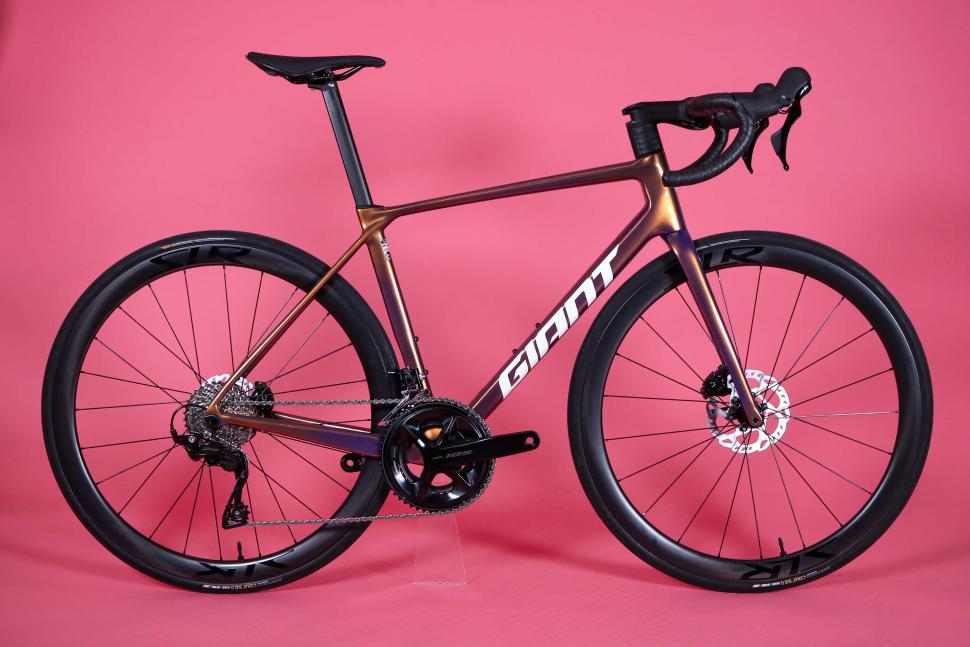


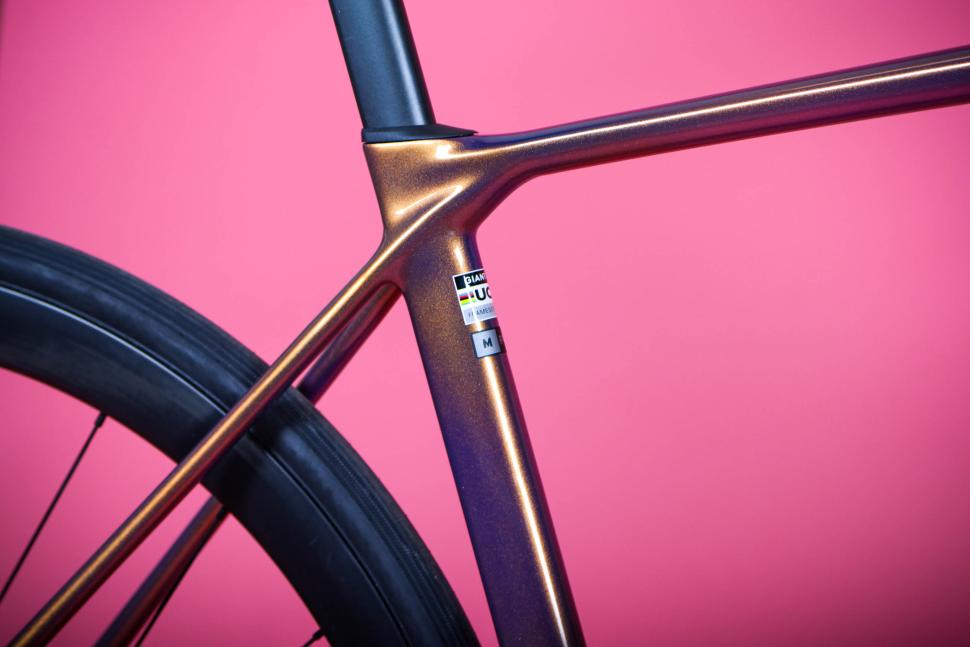


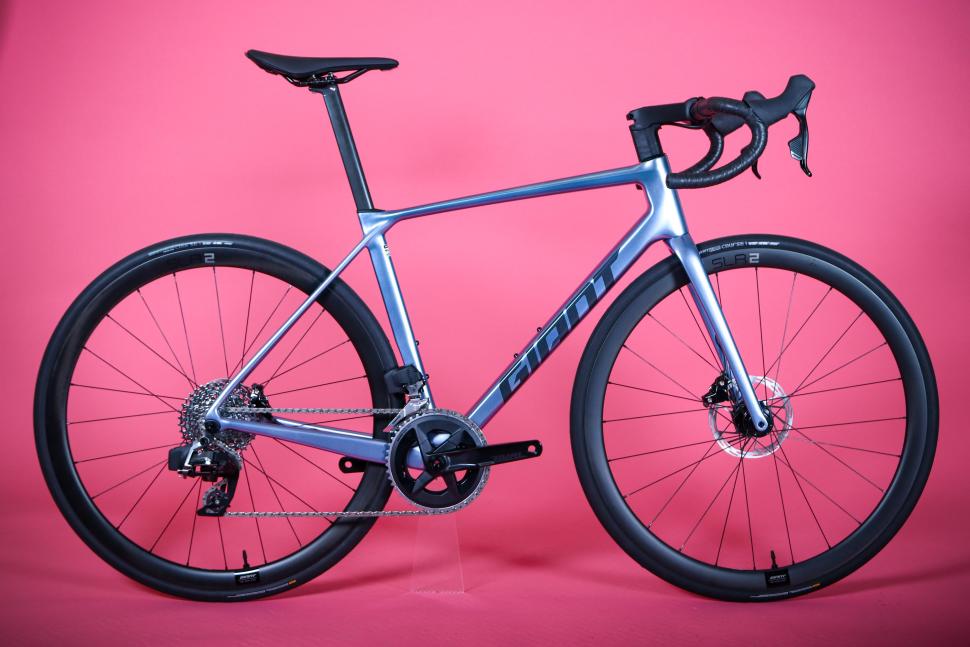


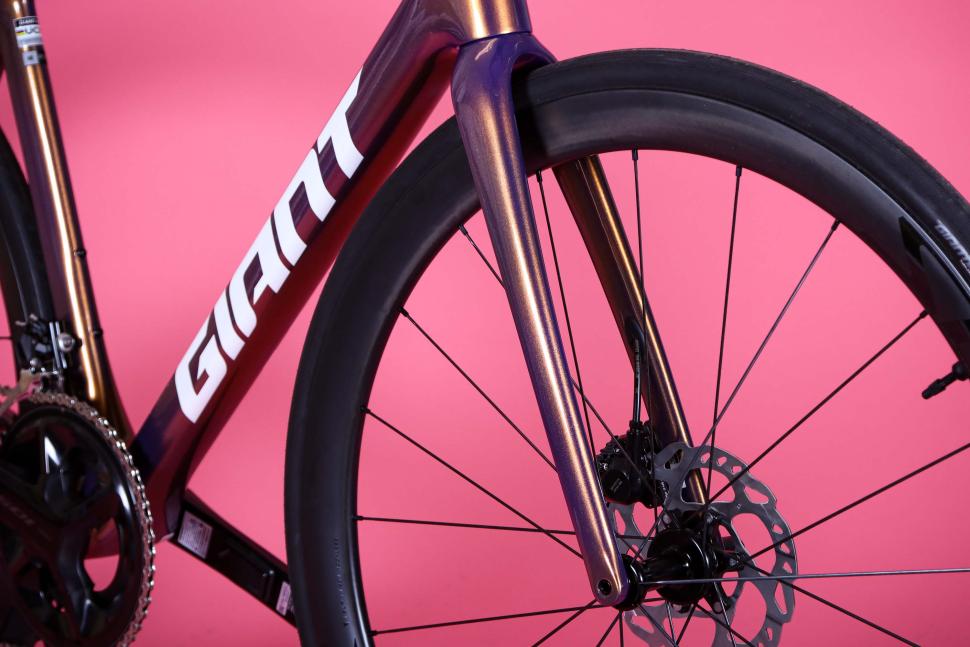


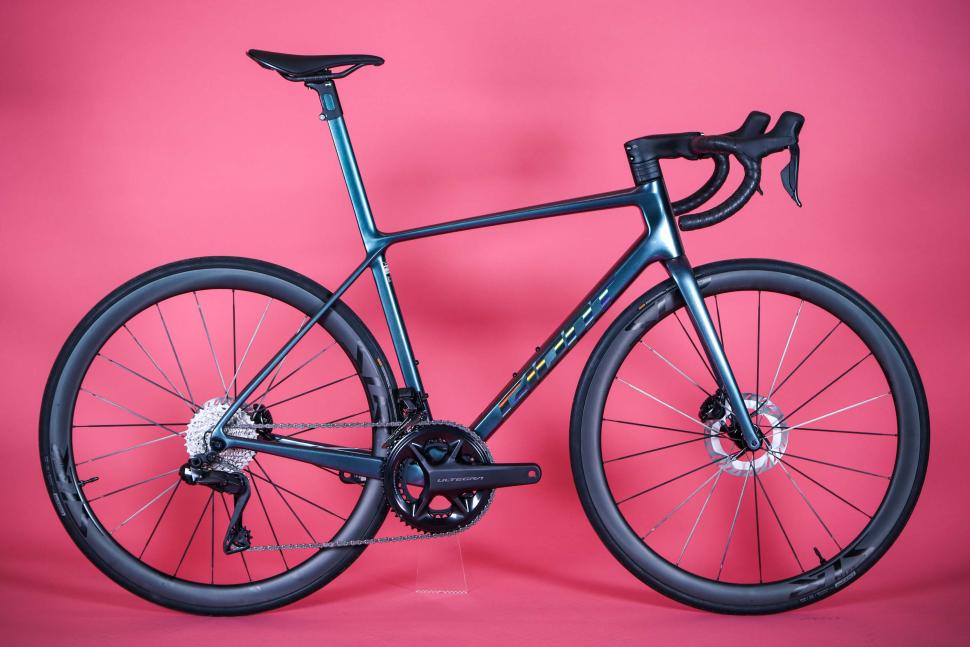
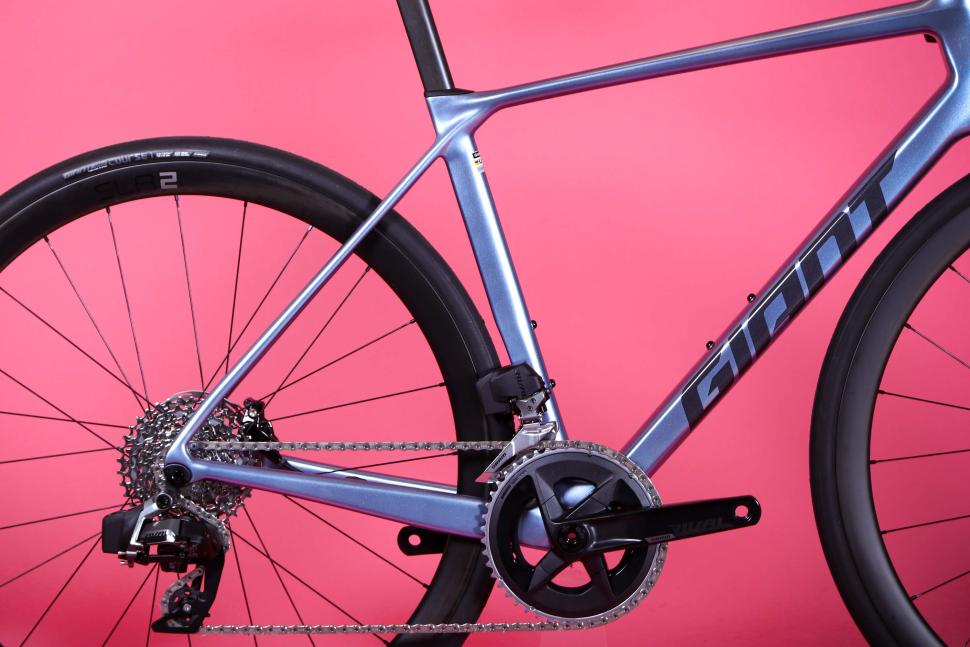
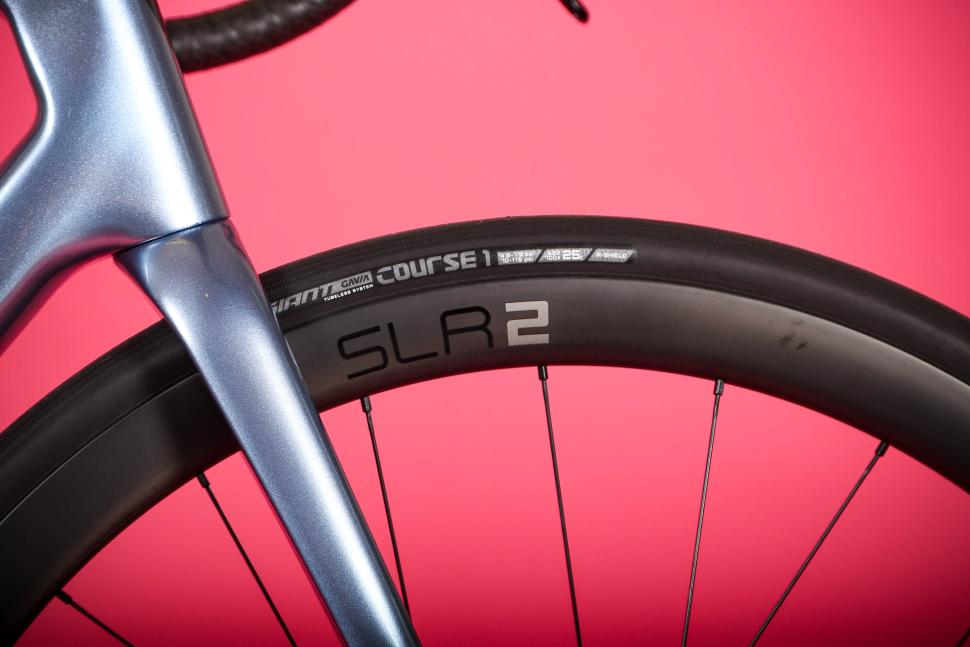
Add new comment
19 comments
Of all the bikes I've owned over the last 15 or so years, the one I miss the most is my old custom self built up TCR Advanced SL in Fluro yellow. That is probably the one bike I would love to ride again. It was such an amazing bike on the climbs. When it went to disc brakes I kind of fell out of love with it but the rim brake SL was such a glorious machine. I doubt Giant will ever top that level of sheer brutal no compromise climbing bike again
They really need to ditch some of those spacers. It looks like one of those bikes you see "mamils" riddind around on with the bars up there.
Given that MAMILS are a large part of their market, I'd say it's wise to allow them to set up the bike how they want.
It was joking. I was looking at the bottom three pictures. It's good to see a bike with a nice low position for a change.
It's probably a press bike so it would make sense not to cut the fork steerer right down and a top spacer chimney would look wrong.
Wait until you're fifty-five old son, you'll see the virtue of bars just lower than the saddle then!
I'm well past that, I'm afraid. Still no problems with low bars though.
I favour low bars - but sitting lower. Or high bars!
For me it's a letdown that Giant uses hookless rims and a pressfit bottom bracket, otherwise the bike looks like a real killer!
I agree 100%
That measure of "efficiency" is bollocks. OK, some of the other numbers, too, but more stiffness is actually detrimental for most riders.
Yeah, for your average rider, it's all nonsense.....
I wish all these websites would ignore these bikes, and promote bikes normal people ride......
Still too performance obsessed.
Why detrimental?
For most normal riders, more stiffness doesn't equal more efficiency but less, because they lack the power to get in sync with the frame. There's a difference between someone putting out 200 or 250 W on a climb and pros who put out twice as much.
Anyway, Tour make me laugh, apparently they just cannot accept that their equation stiffness=efficiency is definitely
debunked.
How do you mean "get in sync with the frame"? A stiffer frame will bend less when you pedal. Whether or not that makes for higher efficiency I don't know, but it certainly feels nicer IMO.
https://www.renehersecycles.com/what-is-planing/
✅Thé CAADEX 40 new wheelset are thé best addition.
💰4 Watts better, oh dear that's not enough & is highlighting it is not anything close to the SL8 that David Arthur's first review on launch confirmed.
☝🏾On point GC Performance's honest first feedback is it 'looks the same' apart from the wires, copy paste. I think R&D needs shaken. Or tan out of money.
🍿Thé rear stay is thinner, But the rear end now looks like a Canyon CF SLX.
💜Thé tidy front end looks nicer, but a little tardy to the party.
🍉Thé BB seems like the old.
🚨Tire clearance to 33mm is nothing magical.
🧤They don't want to step on their Aero Propel all arounder property.
🧤It's a lightweight bike category akin to thé Scott Addict (a better bike back to back). Tour Bike Mag will havé to retest these with the 2024 models.
🧤I would feel short-changed, with the lower component groupsets. Manufacturers made their own over production mistakes post-pandemic. Passing this pain to dealers with millions of £'s stock that still needs sold for some dealers.
🧤🍉🧤I want to give this 5/5, but I feel deflated already. I recall riding the older TCR Advanced Pro 1 with Ultegra Groupset £4,200. This was great value at the time 5/5. However, riding it felt 4/5, as it did not have that fast feel pedal efficiency like you get out of the rrp £5,400 SL7 Tarmac (or even thé older Scott Addict 2016 Rim version which has a similar profile) The new bike colours are generic 3/5.🚨🍉🚨
🚨In the end, consumers are facing a very competitive online market. We do support local helpful genuine retailers, but vote with hard earned cash. Your prices have soared far too much. If any of my 60 club members asked me, I would recommend: Scott Addict, Canyon CF SLX, SL7 Comp or the newer SL8 if budget allows (for thé grin factor). Other brands BMC are also building in futuristic aéro gains with far wider trending forks (the first part of the bike that needs to be aero).
🚲Thé aero test for the bike is probably not as scrutinised as your magazine who use some turbulent air/yaw angled. It's as best as can be possible. It's their results that one should then compare to the competition.🚲
🍉🚨🍉Otherwise, I would refer most humble riders to a used bike eg TCR Advanced Pro 1 £2.2k looks like a bargain now! Often that's with upgraded bars.Look for lightened bars. Better tires. Tubeless. No mere mortal needs hidden cables, we don't.have an advantage with such 2 watt savings.🚨🍿🚨
Thé best saving is reading up on tour bike magazines comparisons. Listen to Chris Millers interview with tour bike as it helps understand: only pro riders benefit & sense from a 10 watt aero change. Mere mortals can sense the feel in a 20 watt change to aero efficiency. There's both bargain used, bargain old stock & thé knowledge that investing in your self by training smart advances one best.
💜happy pedaling, love you! 💜
If Tour magazine is still what it used to be 15-20 years ago (and it seems so, just looking at online pics of their wind tunnel set-up), their measures were and are bollocks. If you want to measure anything meaningful, it has to be done on real roads, with real riders. But that of course is quite a bit more difficult than churning out numbers in a lab, and what's more important, wouldn't tie in quite so nicely with the marketing bollocks from the big bike makers
Tour Mag is still using indoor top tunnel tests, they test as you know Compliance, Stiffness in multiple areas, Efficiency etc, if I refer you direct to the Chris Miller chat with them:
https://youtu.be/HMKWyNdEfvM?si=ZQdblSv-VOhJIjOL
It becomes clear that they don't read or care about Marketing blah, bullocks as you denoted. I have been lucky to be passionate & have ridden a lot of bikes. You can instantly verify the differences in feel, compliance & efficiency. In some it's wheelset letting it down or tires.
Giant & Spez, among others during the pandemic were pressuring dealerships to buy excessive numbers of bikes! This 2020-21 stock is still on sale. I was disappointed by this new model as much as I wanted to love it. The best feature are the CAADEX 40 wheelset which only the richest can afford. The best alternative is the Elite Edge, or Drive, 36T ratchet based off patent DTSwiss250 hub wheelset. However mating it with Aerodynamics means 26mm front tire & 28mm rear for comfort & added compliance. (See law of 105 aerodynamics)..
I fully agree it's real world that's needed & that's why I respect Tour Mags data which also has people riding the bikes. My experiences mostly match what they have often said. Recently I was amazed by the data of a Scott Foil 2014! It's a fast bike & I didn't expect it to be as good as they found - close to more modern bikes. This enforces how Scott have also done well being engineering innovative.